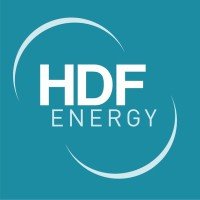Germany and Namibia hydrogen economy agreement progress
Cooperation will thus create great benefits both for Namibia and for Germany.

Federal Minister Robert Habeck has appointed former Energy State Secretary Rainer Baake as Special Commissioner for German-Namibian Climate and Energy Cooperation.
Federal Minister Robert Habeck and Namibia’s Energy Minister Tom Alweendo concluded an agreement on cooperation in the field of the hydrogen economy on 29 March 2022.
“There is hardly any better place in the whole world to use wind and solar energy to make green hydrogen,” said Economic Affairs and Climate Minister Habeck. Onshore wind turbines generate even more electricity there than offshore turbines in the North Sea. Solar installations generate almost three times more power than in Germany. “I am therefore delighted that, from now on, German-Namibian cooperation on green hydrogen will be developed by the expert and former State Secretary Rainer Baake.”
Baake is currently on a 10-day visit to Namibia to discuss establishing a green hydrogen economy with the Namibian Government. He was received by President Hage Geingob on 5 July 2022. Before this, he had attended a session of the Namibian cabinet. His meetings primarily focused on the implementation of the project planned by Namibia to manufacture green ammonia in the south of the country.
“Namibia will produce green ammonia, which we urgently need in Germany for the decarbonisation of our industry,” said Baake.
Germany is the largest consumer of ammonia in Europe. Ammonia is a central feedstock for industry and is becoming increasingly important on the road to climate neutrality. At present, all the ammonia manufactured in Germany is based on natural gas; in recent years, production has accounted for 11% of the gas used in the industrial sector, and has generated nearly 6 million tonnes of carbon emissions.
The manufacture of hydrogen by means of electrolysis requires large amounts of water, which is particularly scarce in Namibia. For this reason, there are plans to construct a seawater desalination plant near Lüderitz, operated on the basis of renewable energy. The plant also intends to provide the local populace with enough clean drinking water.
Since the only way to transport hydrogen cheaply is to use pipelines, not ships, Namibia plans to process the hydrogen into ammonia using atmospheric nitrogen. A new port facility is to load the green ammonia onto ships.
An invitation to bid for the development of a project’s first phase has been won by Hyphen, a consortium of the German firm Enertrag and the South African company Nicolas Holding. The Namibian state is being offered a stake. The investment volume in the first phase roughly corresponds to Namibia’s current gross national product. Establishing a green hydrogen economy offers the potential for a significant economic upturn in the country on the southwestern coast of Africa. During the construction phase, there will be 15,000 new jobs, followed by 3,000 jobs once the facility is in operation. Namibia is currently working on the training of local staff, who are to be recruited on a priority basis.
According to Baake, there are two other major plus points: “We have agreed with the Namibian Energy Minister to undertake a study into how the large wind and solar energy capacities for hydrogen production can be integrated into the Namibian electricity system. I believe there are good prospects that, before the end of this decade, Namibia can become the first African country whose electricity is 100% renewable,” he said.
The fourth benefit is that there will no longer be any need to import coal-fired power from South Africa. At last year’s climate conference in Glasgow, Germany and other industrialised countries had promised to help South Africa phase out its coal-fired electricity generation. “The end of exports of coal-fired electricity from South Africa to Namibia represents a significant contribution to the phase-out of coal in South Africa.
